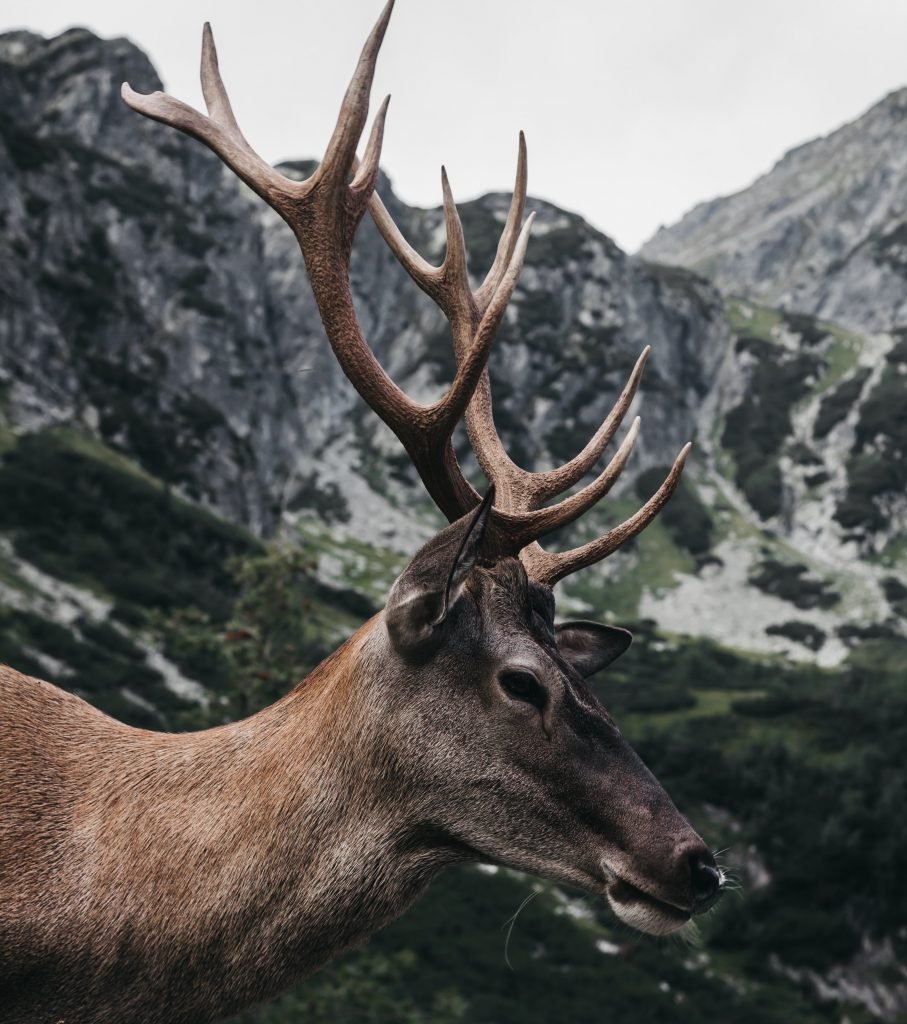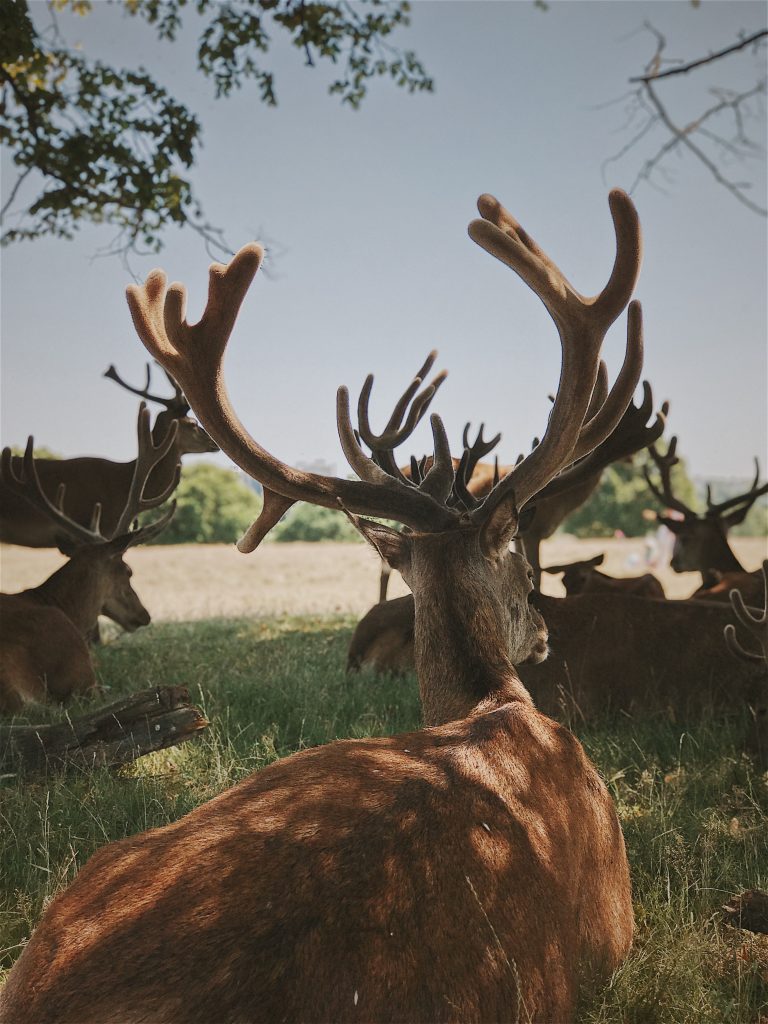Have you at any point seen a deer with a fuzzy, hair-like layer of skin on antlers? Thats called Velvet!! In this quick run-down, we are going to explain Why Do Deer Grow Velvet On Their Antlers!! The velvet gives nourishment and development to deer antlers. This special tissue is a kind of skin, stacked with blood vessels and nerves. The velvet, supplies the growing antler with nutrients and oxygen. As the amount of sunlight changes, the antlers harden, transform into bone, and shed the velvet.
What are deer antlers?

Deer antlers are often called “horns” by deer hunters, yet they are most certainly not. All male members of the deer family like deer, moose and caribou have antlers. It is only the male deer that produce antlers, and couple of deer keep their antlers for significant periods. A male deer not just shows off its antlers to demonstrate its health and well being, yet in addition deer use them to fight other male deer for supremacy and choice of mates.
However there are some females that grow antlers, just like caribou females that grow racks of antlers. The shorter antlers most female deer grow are used to battle off males as they search for food for themselves and their young during winter season.
Deer antlers are growths of bone that deer and similar animals produce for mating season. Antlers are uncovered or exposed bone, which is sort of like your teeth, they are hard. And like bones they are made generally out of calcium and phosphorous. Deer grow antlers starting on their first birthday. It is triggered by hormone production that begins when day length reaches 12 hours.
Growth happens fast, the first time will grow in the first 30 days, and in the next 30 days, the G2 which is the second tine will develop, and by the end of the fourth month the antlers are fully grown. Antlers may look ragged for the day or two since it takes the velvet to be shed. They are shed every year in the winter. While the antlers are developing in the spring, they are covered in velvet, which is a hairy, waxy feeling substance that warms to the touch due to the fact that it is alive, while the bone grows. Bucks sometimes eat the velvet.
Deer antlers take a great deal of energy to develop. From year to year, antler size may increase significantly from 1½ years old, which is the first antlers, through age 3½ or 4½. Deer antlers do increase from year to year until age 7½, but the increase is less noticeable. By 8½ years of age, the antlers are on their way down. Since deer do not consume much calcium with their vegetarian diet, and the calcium in the antlers is grown just like the calcium in the bones, produced by chemical reactions in their bodies. This takes up a lot of available nutrients and energy, and only the healthiest deer can grow large antlers.
How does the velvet work?
It’s really an odd phenomena as to why deer grow velvet on their antlers…. Even the largest deer antlers develop from small nubs to full size in three to four months, making them one of the quickest developing types of tissue. They start as small hard bony growths at the top of the head, and are covered with a layer of skin and hair known as velvet. This velvet keeps the antlers protected while they are fragile. When deer antlers have reached a bigger size and stop growing the blood vessels that keep the velvet developing shut down around the base of the antlers.
This makes the velvet skin to die and in the end peel away, at times leaving trailing and hanging bits for several weeks. Male deer ordinarily rub their antlers against trees and different items or objects to remove the stripping velvet. Since deer antlers take up so much vitality, it is beneficial for most of the little deer to shed them as fast as possible after mating season ends. The deer draw calcium and comparable nutrients back into the system, so that in the end the antlers become brittle and drained.
A layer of cells grow at the base of the antlers, gradually dis-joining their connection to the body and making them fall off. In contrary to popular belief, deer do not rub their antlers on trees just to expel the velvet. In some random year, an individual buck may make hundred several rubs, 99.9% of which are made after the velvet has already been removed.

Why deer grow velvet on their antlers?
Velvet is fundamental for the deer to develop their antler. The growing of antler isn’t just simply the point of it per se. Here are several reasons that encompass why this “velvet” is so important.
- Mating
The velvet is important for the development of the bone that deer and similar kind of animals produce for mating season. Deer antlers are used primarily for mating purposes, to fight other male deer for mating rights. Male deer grow their first set of antlers when they hit puberty at roughly one year of age.
- Hierarchy
In contrast to some animals with horns, you can see the age of deer by counting the yearly growth rings on the antlers. The size of the antlers and the number of points do not indicate the age of the deer. On account to their crown-like head piece antlers, the stag is called as the king of the forest, the defender of other animal creature Antlers and velvet plays a large role to the hierarchy of the animals in the forest.
USES TO MAN
- Medicinal Purpose
Due to the extraordinarily dense nutritional benefit, such as boosting strength and endurance, improving immune system, countering the effects of stress, promoting rapid recovery from illness and warding off infections, for more than 2000 years, numerous people most particularly in Asia have utilized the discarded deer velvet and use it as dietary supplement and alternative medical substance. Nowadays, people use to take a velveteen supplement either in a pill form or as a spray.
Deer antler extract has become more popular among western and body builders because the extract, given its trace amounts of IGF-1 is believed to aid in building and repairing muscle tissue. There are actually some professional athletes who testified that it has been the velvet natural velvet supplement that has helped them recover from injuries and regain their health.
Other Benefits:
- Some people use it to for the treatment of high cholesterol, high blood pressure, migraines, muscles aches and pains, asthma, indigestion, weak bones (osteoporosis), headache, liver and kidney disorders, cold hands and feet, soreness and weakness in the lower back and knees, chronic skin ulcers, and overactive bladder.
- It can also be used as supplements in promoting youthfulness, sharpening thinking skills, protecting the liver from toxins, stimulating production and circulation of blood and increasing the number of red blood cells.
- Some people also use deer velvet in increasing levels of certain sex hormones (estrogenand testosterone), improving fertility, increasing interest in sexual activity (as an aphrodisiac), and treating male sexual performance problems such as erectile dysfunction.
- Some women use deer velvet to reduce the dose of estrogen which they need in hormone replacement therapy. Some also use it for menstrual and menopausal problems, vaginal discharges, and uterine bleeding.
- For children, deer velvet is used as a tonic for children with mental, retardation, learning disabilities, and bone problems such as rickets.
- Deer velvet is also used to improve eyesight and hearing, to reduce stress and to treat arthritis, osteoporosis and anemia.
- It can also be used in women’s reproductive disorders such as premenstrual syndrome (PMS), ED, and skin conditions.
- Deer velvet can also be used as herbal combination to increase blood circulation to the brain and to delay or reduce signs of aging such as tissue, bone and muscle degeneration.
- Decorative and tool use
Deer antlers have been utilized through history as a material to make tools, weapons, decorations, and toys. In particular, it was an important material in the European Late Paleolithic, used by the Magdalenian culture in making carvings and engraved plans on objects such as the so called Bâton de commandements and the Bison Licking Insect Bite. During the Viking Age and medieval period, it is an essential material in the comb making craft.
In later periods, antlers were then used as a cheap alternative for ivory, which was a material particularly connected with gear and equipment for hunting, such as saddles, horse harness, guns and daggers, powder flasks and as buttons and more For the decorative or ornamental display of wall-mounted pairs of antlers on walls, it has been popular since the medieval times.
- Ceremonial costume
For more than 10,000 years, Shamans and other spiritual figures in various cultures wore antler headdresses and others wore it for ceremonial dance, such as Yaqui deer dances and carried in the Abbots Bromley Horn dance.
Antler generation and growth is an amazing process, known to be the fastest growing tissue in the animal kingdom. With all the benefits to man that it brings, an understanding of the factors that control antler growth is very important to achieve quality deer management.
Hopefully this helps understand why deer grow velvet on their antlers. Bets of luck to you and your hunting ventures!! If you liked this article, feel free to check out some of our popular posts below! Thanks for reading and See You In The Woods!
